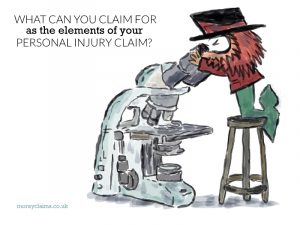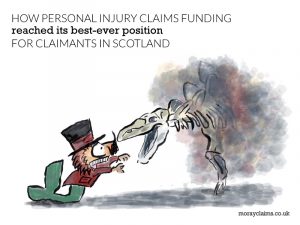The Elgin Gift Card, is the perfect gift or treat. While a normal gift card can be used only at one business, the Elgin Gift Card can be used at any one of more than 80 participating city centre businesses.Simply look on the Gift Card Map to see the businesses involved and decide what you want to do: have your lunch or dinner,put it towards a holiday,indulge yourself in a bit of luxury,get something for the house,get your hair done, orbuy clothes – it’s that simple and the choice is yours. You can buy your gift cards atiFix Phone Repairs- Batchen Street, Gordon & MacPhail – South Street or online. Soon, you can also have the chance to win a £10 Elgin Gift Card every week through Moray Claims on Facebook. This weekly competition will post a short excerpt of song lyrics which mention the word “lawyer” in them and all you have to do is be the first to correctly identify the name of the song in order to win. The first person to post the Continue Reading
Whiplash Claim in Scotland? Make sure you apply the right rules
In Scotland, we are used to being lumped in with England and other parts of the UK in all sorts of situations where that may be misleading or even wrong. Sometimes the law is the same in Scotland as in the rest of the UK and sometimes it’s not. Personal injury claims are usually based upon negligence of one person causing injury to another. The modern law of negligence for the UK (and much of the world) is based on the Scottish “snail in the ginger beer bottle” case of Donoghue –v- Stevenson. But some areas of personal injury law differ markedly between the jurisdictions. For example, the law relating to claims in cases of fatal accidents and payment of bereavement damages to relatives of deceased persons. Scotland has had a more ‘generous’ compensation scheme in this type of case than the rest of the UK for a long time. But one area where there has been a parting of the ways between Scotland, on the one hand, and England and Wales, on the other, has come as recently as May Continue Reading
What all can you claim for with a personal injury claim?
The style of lettering you use for words can have life and death consequences. Research by the AgeLab at Massachussetts Institute of Technology (MIT) has noted how car dashboard interfaces, if designed correctly, should minimise the amount of time the driver has to spend looking at them. The longer you take to work out what's on the screen, the less time you're looking at the road. Some typefaces are rigid and uniform. Their letters and numbers can look highly similar to each other. But other typefaces have much more open spacing and varied letter shapes. These latter fonts can shave precious milliseconds off the time drivers spend looking away from the road. Getting this form of visual communication right is important because the consequences for vehicle travellers' safety could be serious. With personal injury claims, one thing you need to get right in order to avoid potentially serious consequences is the valuation of the claim. With personal injury claims, your Continue Reading
How personal injury claim funding got to its best-ever position in Scotland
In jokes, lawyers are never portrayed as the cream of society. Musicians like to make jokes about each other. Drummers and viola players are a bit dim; accordionists and banjo players are downright annoying (because their instruments are 'loud' and drown out others nearby). Here are a couple of cartoon-based jokes where lawyers and banjo players are on opposite sides. (A) Lawyer (probably a lawyer rather just a "businessman" - because his discomfort is doubly delicious) in a lift (elevator), talking on his mobile phone: "I'm trapped in an elevator. Wait it gets worse..." (The other occupant of the lift is a banjo player). It works better in the original... (B) Father to young child who is holding a banjo and standing on a chair to be high enough to see the music on their music stand: "Certainly a law degree is a worthwhile endeavour, son, but you need something to fall back on. Now practise your banjo." (Lawyers' response: Ouch). You wouldn't necessarily expect to be Continue Reading



